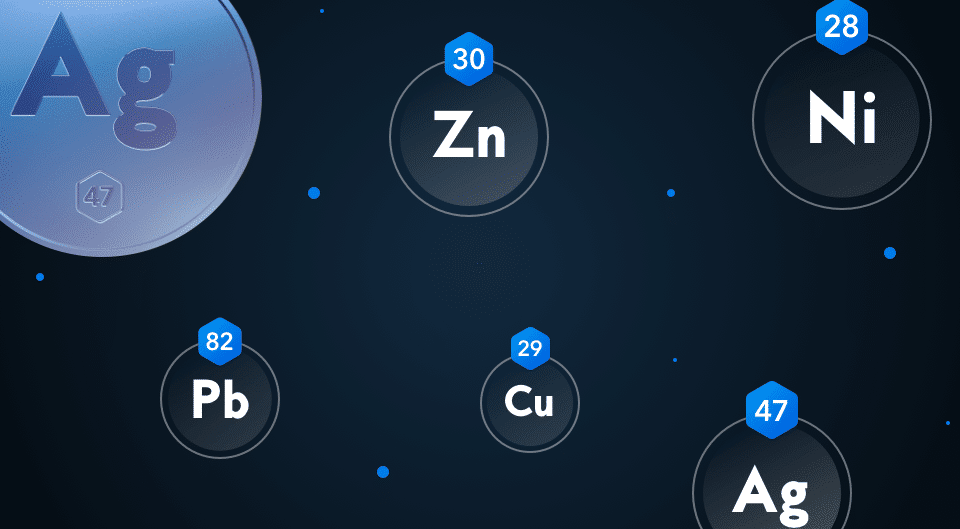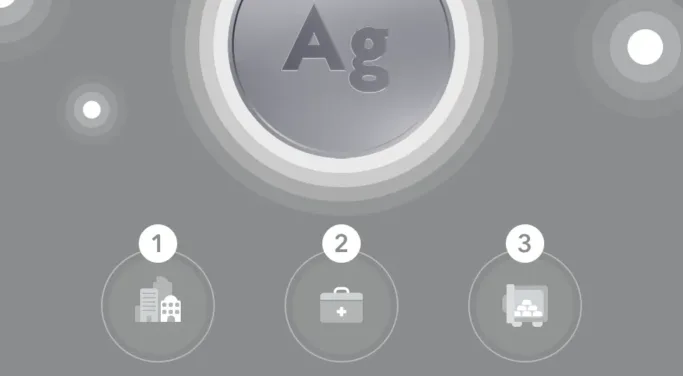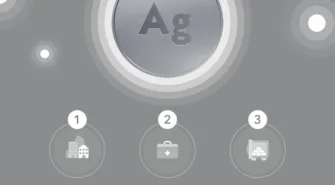Silver is one of the most versatile of metals, combining the highest conductivity of heat and electricity of any element with exceptional aesthetic properties – its reflectivity and lustre make it ideal for jewellery and tableware – and outstanding antimicrobial properties.
In addition, silver is an abundant element, relatively easy to extract from naturally-occurring ores; it is extremely malleable and ductile, meaning that it can be manipulated into different shapes, yet it is physically strong and has a high melting point.
We can divide its common current uses into three parts:
- Industrial
Industrial use takes up more than half of all global silver production every year, compared with just 10-15% of gold. Common industrial uses include soldering and brazing alloys, batteries, photovoltaic energy, RFID chips to track deliveries, dentistry, nuclear reactors, photography, glass coatings and LED chips.
Silver is also used in the manufacture of semiconductors, smartphone touchscreens, plasma television screens, for water purification and materials preservation. In chemical processes, silver is crucial for catalysing ethylene oxide to make polyester, solvents, detergents and everyday products like antifreeze.
- Medical
Silver biocides appear throughout the medical environment, acting against bacteria by stopping it from bonding with other chemicals while remaining harmless to animal cells.
In combination with water, silver ions have a powerful antibacterial effect, so they’re found in hospital water systems, while a silver coating keeps surgeons’ operating tools safe.
Silver’s antibacterial properties mean that nanoparticles are often woven into clothes, to prevent bacteria from feeding on sweat.
- Store of value
Silver is a convenient and widely accepted store of value, traded on international markets as investment-grade silver bullion. While silver coins are no longer common currency, silver objects including tableware, jewellery, artworks and vintage coins retain strong value.
Since it is a highly reflective material, silver is commonly used in mirrors and specialised glass that can react to light. Investment analysts study the potential demand for silver to determine its future value.
Historical use of silver
Evidence from Turkey and Greece shows that silver was first mined around 3000 BC after the Chaldean people devised a means of extracting the metal. By 600 BC the city of Athens thrived on silver from local mines in Laurium. While German mines dominated medieval Europe, Peruvian, Bolivian and Mexican mines thrived in South America.
Initially used for jewellery, tableware and coinage, Ancient Phoenicians (in modern-day Lebanon and Israel) understood that silver-coated bottles kept their water fresh; in the 19th century, doctors used silver nitrate in antibacterial dressings and to cure ulcers.
With the invention of photography in the mid-19th century, a huge new market for silver emerged. Its sensitivity to light made silver an ideal material for the art form, particularly silver bromide and silver nitrate. By the end of the 20th century, photography represented the most common destination for global silver production, employing a quarter of it. Yet as digital photography displaced analogue, this slipped to just 9 per cent by 2013.
Instead, demand for silver for photovoltaic cells rose sharply in the early 21st century, with the sector using 19 million ounces each year by 2008. Although innovation has reduced the percentage of silver in photovoltaic cells, the rise of high-tech batteries, used in electric vehicles and consumer electronics, has kept demand high.
As an investment, silver is a cyclical material: when equity markets perform poorly and economic conditions unstable, investors seek sanctuary in raw materials and precious metals, which act as a hedge against inflation.

Materials overview
Silver is found ‘uncombined’, in ores including argentite and chlorargyrite (also known as horn silver). More often, it occurs in combination with lead-zinc, copper, gold and copper-nickel ores, from which it is extracted as a by-product.
Each year around 20,000 tonnes of silver is produced. Silver is the most commonly occurring of the noble metals (meaning that it resists corrosion and oxidisation) and makes up 0.07 parts per million of the earth’s crust, compared with 0.01 for gold.
Silver’s material properties include its unsurpassed conductivity of heat and electricity, its malleability, its sensitivity to light, its antibacterial qualities and its high reflectivity.

Future of silver
Exponentially increasing demand for photovoltaic cells, electric vehicles and supercapacitors, using nano silver conductive inks, means that demand for silver is likely to rise in the coming years. Batteries using silver oxide or silver zinc alloys perform well at high temperatures, making them ideal for aerospace and defence applications.
Renewed interest in nuclear energy, in response to security concerns over oil and gas, may also feed into higher demand, since silver is a key component in control rods in nuclear reactors.
Investment analysts argue that silver is currently under-priced, and with global economies still under pressure following the Covid-19 pandemic and geopolitical friction, its value is likely to rise.
Innovative fabrics and clothing are also likely to incorporate silver, thanks to its antibacterial properties and malleability.
Find out how silver works on the blockchain
This publication is for informational purposes only and is not intended to be a solicitation, offering or recommendation of any security, commodity, derivative, investment management service or advisory service and is not commodity trading advice. This publication does not intend to provide investment, tax or legal advice on either a general or specific basis.




